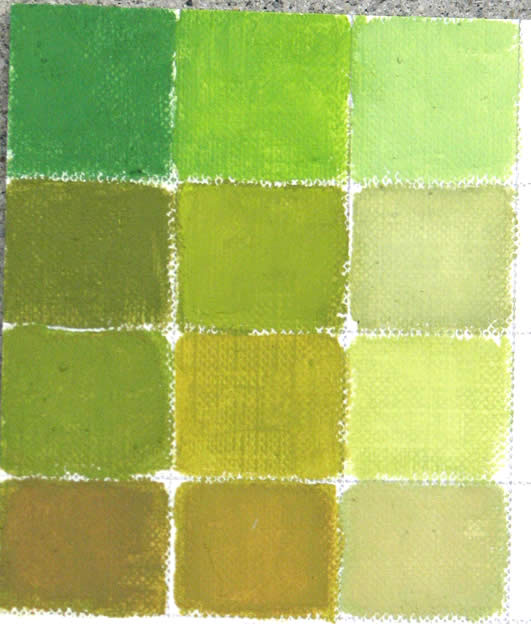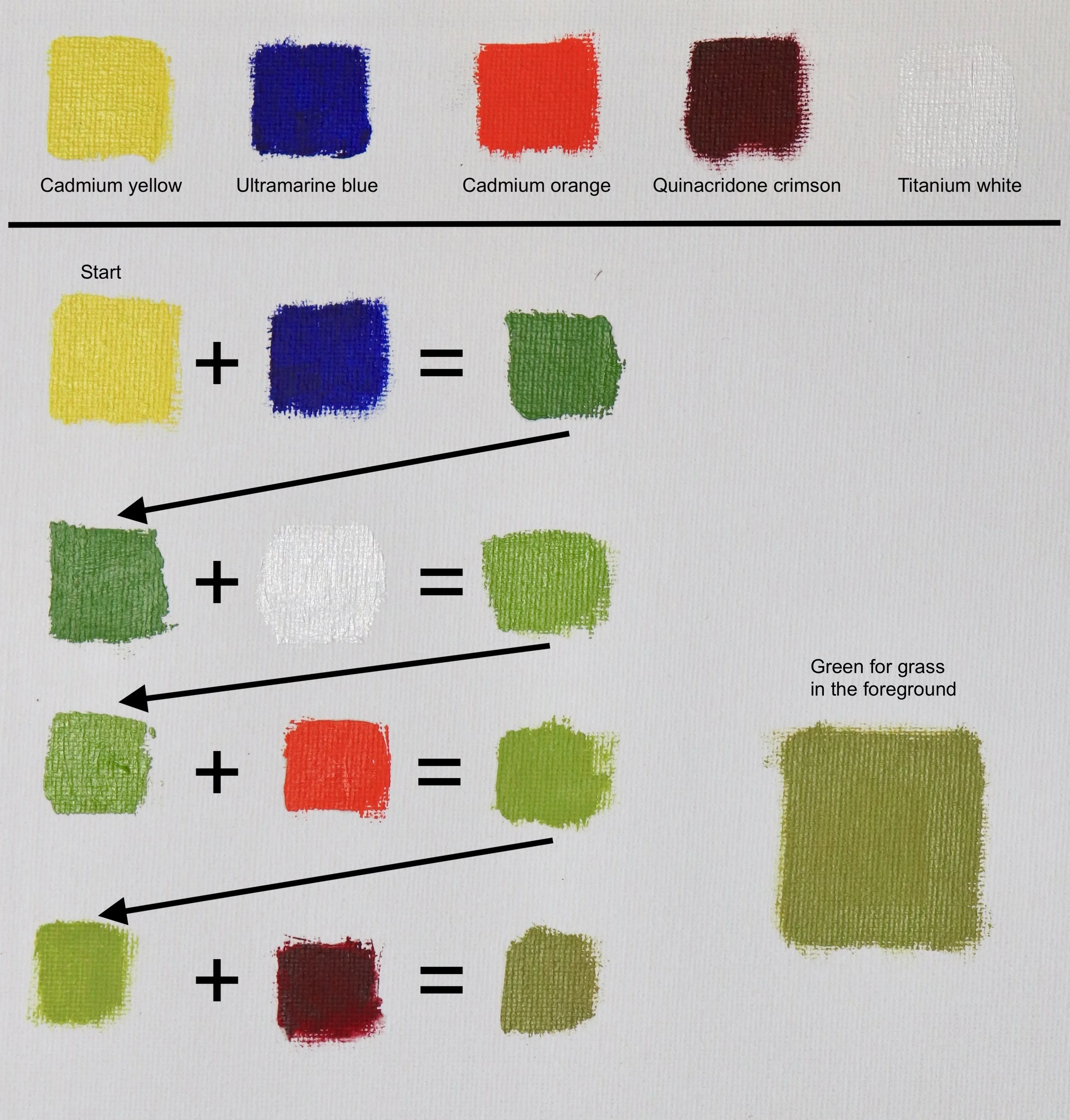One common way to mix greens is to start with a base middle green and modify it with two other colours to achieve a spectrum of greens. How To Successfully Mix Greens And Paint A Summer Landscape 2 hrs.

Painting Lesson How To Mix An Endless Amount Of Greens
For the first mix squeeze Lemon Yellow and Cerulean Blue keeping them well apart.

. Mixing Greens Color Chart 1. Avoid common missteps and master this exciting medium with help from Liz Haywood Sullivan. If you want a lighter green start with yellow first and then add blue.
Cadmium Yellow Light Cerulean Blue Cadmium Red Light Cadmium Orange Alizarin Crimson and Titanium White. Both these colors are relatively warm contain some red. I wasnt paying attention to make sure I was mixing accurate greens for all the unique greens in the landscape.
Mixing Green In The Landscape If you are painting a landscape knowing how to mix greens is essential. But with all the pre-mixed greens blues and. It will make your mixed greens lighter and cooler.
There are many colors of green available right out of the tube. Not surprisingly the dullest green was produced by mixing yellow ochre and ultramarine blue. Best Yellows for Painting.
Simplify the complicated masses of green into a painting that is strong interesting and beautiful. This choice forced me to take more time to mix my greens. Making shades of dark green by adding a darker green to the color mix In addition pthalo green will darken your green quickly.
Consequently it has the unique property of being both warm and coolalmost to where green is sort of neutral in color temperature. The first two columns of the first row are two values of Cadmium Yellow Light mixed with Cerulean Blue. It is essential to have a good arsenal of greens for any one who paints landscape scenes.
In this full painting demonstration you will see the thought process of mixing color for a green landscape from start to finish. Adding yellow ochre and burnt sienna to the palette as mixers toned down the Phthalo but still gave me luscious greens. When I started painting landscapes outdoors I kept ultramarine and cadmium yellow light or lemon yellow on hand.
The only downside is that it can be a very saturated color. How to simplify what you see so that values and colors become easier to understand and apply. Mixing greens for landscape painting is an art unto itself and the color choices that you make can have a profound impact on your work.
The resulting green is almost just a. However relying too heavily on tube greens can restrict the range and variety of greens in your paintings. If you need a warmer light color mix a tiny bit of Yellow ochre in.
This first block of colors was created from the following tubed colors. In this video I show some of the different greens that can be mixed from blue and yellow in oil paints and how to use those to create more natural landscape. Yellows and blues for creating an infinite range of greens in your palette.
Start with a Base Middle Green. When you start combining all of these you end up with a fantastic array of luscious greens that are a bit brighter than the Ultramarine mixes but still look natural enough for a traditional landscape painting. Sap Green was average-looking enough that I was lazily using it for all my greens without much mixing.
With a cool blue and a warm blue crisp greens can be mixed as well as an array of sky shades for any landscape painting. North Richmond farmland 145 x 105 37cm x 27cm Watercolor painting by Joe Cartwright The main colors I use to create my greens are Cobalt Turquoise Winsor Lemon Raw Umber and French Ultramarine. This landscape painting tutorial features pastels and shows you how mixing greens in pastel can be accessible and easy.
When you mix darker greens start with blue and gradually add yellow. The base middle green can be a tube of a single pigment green a tube of a premixed-for-convenience green or your favourite mixture of two paints to make an average middle green. Take a larger dot of blue and mix into your extra spread.
But when mixed with other colors especially. Doing it this way will save you some paint. In light waves green is pretty much right in the middle of the visible spectrum.
Dioxazine purple purple is a great option for darkening green as it will make your green a cooler dark but not as cool as if it was mixed with ultramarine blue. The solution to that problem is in mixing greens from the blues and yellows on your palette. Also I find the premixed greens can be too bright for the landscape paintings I like to produce.
For the first mix squeeze Lemon Yellow and Cerulean Blue keeping them well apart. Mix well and spread the mix a short way down the board to make the next mix. So I replaced Sap Green on my palette with Viridian.
In addition the yellow ochre is of low saturation. Leaving a little pure yellow behind Spread a generous blob of lemon yellow and add a tiny dot of the blue. One common way to mix greens is to start with a base middle green and modify it with two other colours to achieve a spectrum of greens.
For some paintings I like to have specialty colors like Cobalt Green a useful blue green great for mixing grays or Green Gold a particularly luminous warm yellow-green wonderful for light-filled areas. When mixing a green use the fact that green has either a blue or a yellow bias as the starting point in determining the proportions you mix. In subtractive color mixing like paints green is a mixture of yellow and blue warm and cool.
Adding yellow ochre and burnt sienna to the palette as mixers toned down the Phthalo but still gave me luscious greens.

Mixing Greens For Landscapes Youtube

How To Make Tube Greens Look Natural Celebrating Color

Terry Miura Studio Notes Mixing Greens

How To Mix Greens For Landscape Paintings Samuel Earp Artist

How To Mix Greens For Landscape Paintings Samuel Earp Artist

How To Mix Greens For Landscape Paintings Samuel Earp Artist

How To Mix Greens For Landscape Paintings Samuel Earp Artist

0 comments
Post a Comment